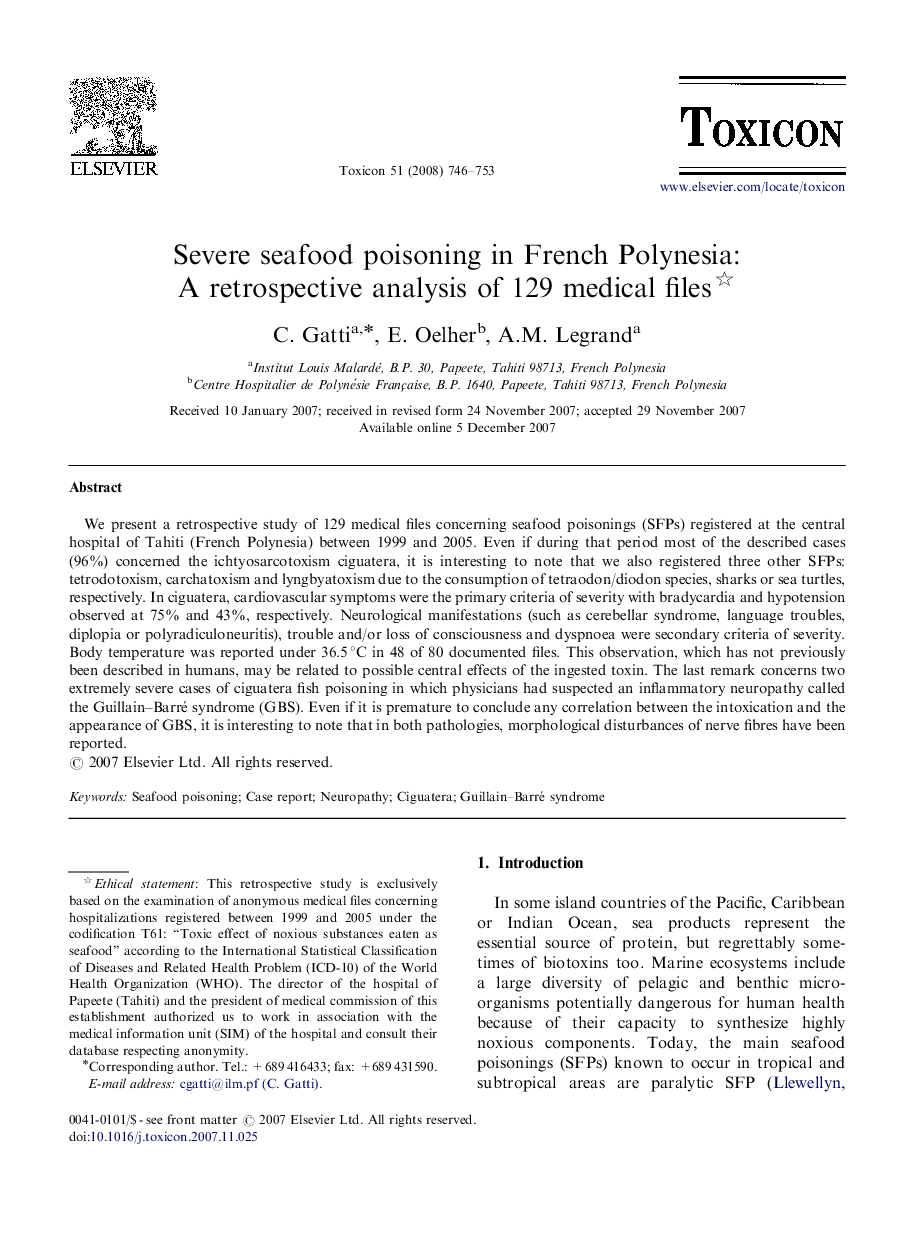| Article ID | Journal | Published Year | Pages | File Type |
|---|---|---|---|---|
| 2065695 | Toxicon | 2008 | 8 Pages |
We present a retrospective study of 129 medical files concerning seafood poisonings (SFPs) registered at the central hospital of Tahiti (French Polynesia) between 1999 and 2005. Even if during that period most of the described cases (96%) concerned the ichtyosarcotoxism ciguatera, it is interesting to note that we also registered three other SFPs: tetrodotoxism, carchatoxism and lyngbyatoxism due to the consumption of tetraodon/diodon species, sharks or sea turtles, respectively. In ciguatera, cardiovascular symptoms were the primary criteria of severity with bradycardia and hypotension observed at 75% and 43%, respectively. Neurological manifestations (such as cerebellar syndrome, language troubles, diplopia or polyradiculoneuritis), trouble and/or loss of consciousness and dyspnoea were secondary criteria of severity. Body temperature was reported under 36.5 °C in 48 of 80 documented files. This observation, which has not previously been described in humans, may be related to possible central effects of the ingested toxin. The last remark concerns two extremely severe cases of ciguatera fish poisoning in which physicians had suspected an inflammatory neuropathy called the Guillain–Barré syndrome (GBS). Even if it is premature to conclude any correlation between the intoxication and the appearance of GBS, it is interesting to note that in both pathologies, morphological disturbances of nerve fibres have been reported.
